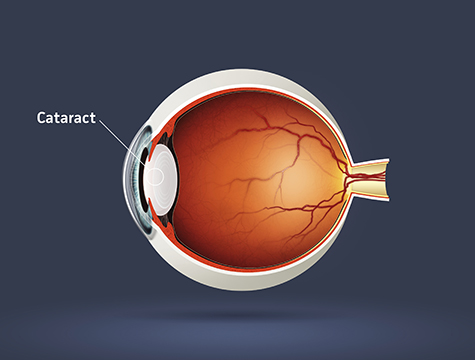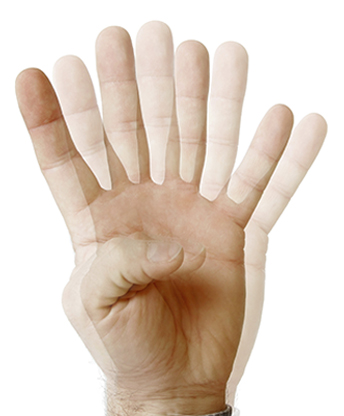The ABCD’s of Cataracts

Affecting your eyesight
In a normal eye, light enters and passes through the lens. The lens focuses the light into a sharp image on the retina, which relays messages through the optic nerve to the brain. If the lens is cloudy from a cataract, the image you see will be blurry. Other eye conditions, such as myopia, may also cause blurry vision, but cataracts produce some distinctive signs and symptoms.
A cataract is a progressive, painless clouding of the natural, internal lens of the eye. Cataracts block light, making it difficult to see clearly. Over an extended period of time, cataracts can cause blindness.
The majority of cataracts are related to aging. More than half of Americans over 65 have cataracts, but they can develop in younger people too. Babies can be born with what are known as congenital cataracts, and children may develop them as a result of injury or illness.
Blurry vision
Blurry vision at any distance is the most common symptom of cataracts. Your view may look foggy, filmy, or cloudy. Over time, as cataracts worsen, less light reaches the retina. People with cataracts may have an especially hard time seeing and driving at night.
 Color changes Color changes
Cataracts can affect your color vision, making some hues look faded. Your vision may gradually take on a brownish or yellowish tinge. You may not notice this discoloration at first, but over time it may become more difficult to distinguish blues and purples.
Other early symptoms of cataracts are glare and sensitivity to light. You may have trouble seeing in bright sunlight. Indoor lights that once didnít bother you now may seem too bright or have halos. Driving at night may become a problem because of the glare caused by street lights and oncoming headlights.
 Double Vision Double Vision
Sometimes, cataracts can cause double vision (diplopia). Images will appear double in the eye affected by cataract even with only one eye open. This differs from double vision caused by the eyes not working with each other properly due to a muscle issue. In this case, the double vison usually goes away when either one of the eyes is shut.
What Causes Cataracts?
The exact cause of cataracts is unknown. While the risk grows as you get older, these factors may also contribute:
- Diabetes
- Smoking
- Excess alcohol use
- Eye Injury
- Prolonged use of corticosteroids
- Prolonged exposure to sunlight or radiation
How Are Cataracts Diagnosed?
Most cataracts can be diagnosed with an eye exam. Your eye doctor will test your vision and examine your eyes with a slit lamp microscope to look for problems with the lens and other parts of the eye. The pupils are dilated to better examine the back of the eye, where the retina and optic nerve lie.
Surgery for Cataracts
If you have vision loss caused by cataracts that can’t be corrected with glasses or contact lenses, you may need surgery to remove the cataracts. During cataract surgery, the eye’s cloudy natural lens is removed and replaced with an artificial lens. The surgery, which is done on an outpatient basis, is very safe and extremely effective at improving vision. If cataracts are present in both eyes, surgery will be performed on one eye at a time.
Types of Cataract Surgery
There are two types of cataract surgery. During the more common type of cataract surgery, called phacoemulsification (phaco), the doctor makes a tiny incision in the eye and uses special instruments to break up the lens with ultrasound waves. The natural lens is removed, and an artificial intraocular lens (IOL) is put in its place. The IOLs used in modern cataract procedures may be able to eliminate the need for thick glasses or a contact lens after surgery.
Cataract Surgery Innovations
Recent developments in cataract surgery and IOL technology can correct both near and distance vision and minimize or eliminate the need for reading glasses after surgery. Conventional "monofocal" lenses only correct for distance vision, meaning reading glasses would still be needed after surgery. "Toric" implants are also available to correct astigmatism.
BACK
|


